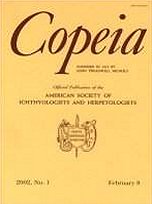Six related studies were conducted with four captive juvenile Kit Foxes (Vulpes macrotis) to test the hypothesis that blood-squirting from eye-socket tissues by Texas Horned Lizards (Phrynosoma cornutum) is a canid antipredator defense. In 16 trials, naive “hungry” foxes killed and ate adult Yarrow's Spiny Lizards (Sceloporus jarrovii; eight of eight trials) slightly more frequently than adult P. cornutum (six of eight trials). Adverse responses by foxes (head shaking) were seen in five of six trials in which Phrynosoma squirted blood. Later these experienced foxes, fed ad libitum, killed and ate mice (eight of eight trials) while largely ignoring P. cornutum (one killed and eaten in eight trials), suggesting a learned aversion to horned lizards as prey. During attacks on mice smeared with horned-lizard blood, foxes displayed behaviors typical of predatory encounters with horned lizard prey (head shaking and prey tearing). These prey-handling behaviors were in striking contrast to those elicited by untreated mice and by mice treated with mouse blood, demonstrating that horned-lizard blood (and its chemical constituents) altered normal behaviors toward mouse prey. Prey-handling times for mice treated with horned lizard blood were significantly longer than mouse-only treatments. Responses of foxes to mice coated with horned lizard Harderian- and lacrimal-gland tissues coupled with responses to mice coated with systemic horned-lizard blood, mouse blood, and untreated mice suggest that (1) no defensive chemicals are added to the blood by orbital glands before blood ejection, and (2) active antipredator chemicals are carried in the circulating blood as well as in squirted blood. In four trials, foxes attacked “de-horned” horned lizards; a role for cranial horns in facilitating predator hesitancy prior to blood squirting is proposed. Evidence is presented that horned lizards visually identify and categorize foxes as appropriate predators for a blood-squirting defense. We conclude that, in many predator-prey encounters with wild canids, blood-squirting by Texas Horned Lizards is an effective chemical defense. We propose a scenario for the evolution of this unique defense and suggest that the defensive compounds found in the blood may be sequestered from the seed-harvester ant prey of horned lizards.
How to translate text using browser tools
1 August 2004
Responses of Kit Foxes (Vulpes macrotis) to Antipredator Blood-Squirting and Blood of Texas Horned Lizards (Phrynosoma cornutum)
Wade C. Sherbrooke,
George A. Middendorf
ACCESS THE FULL ARTICLE





